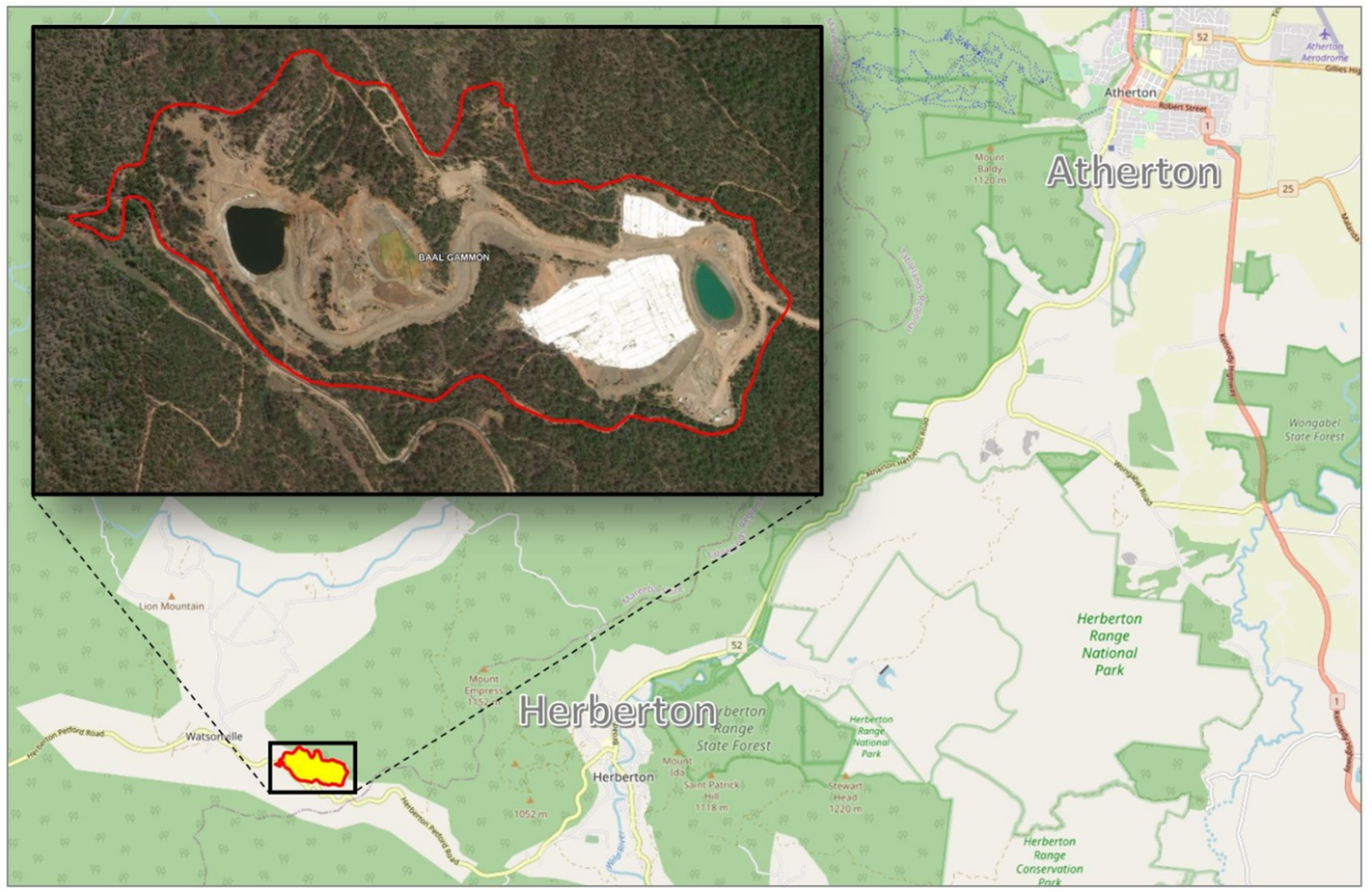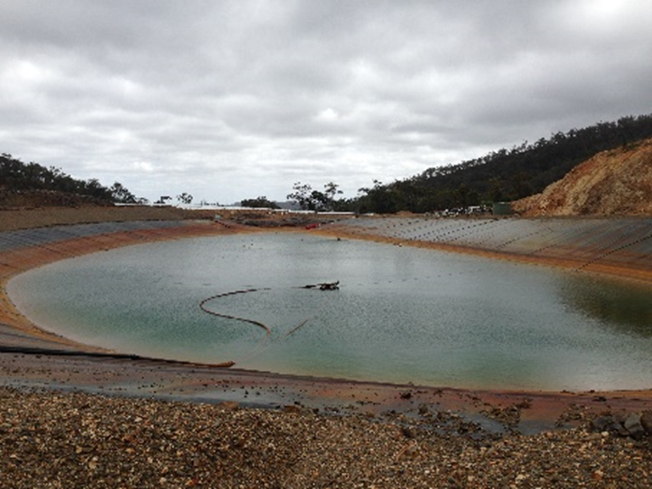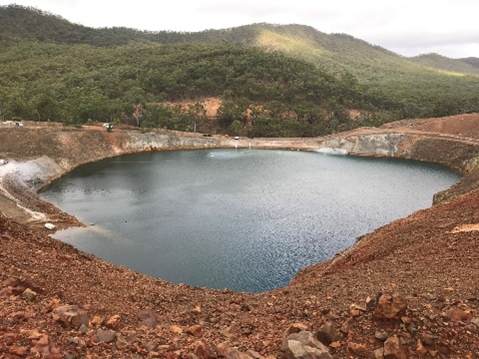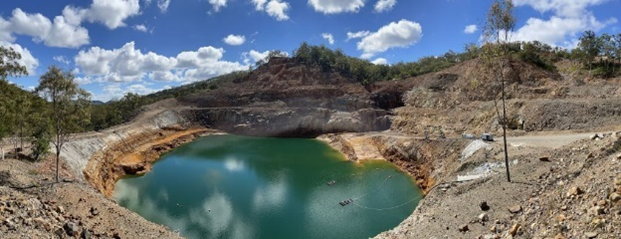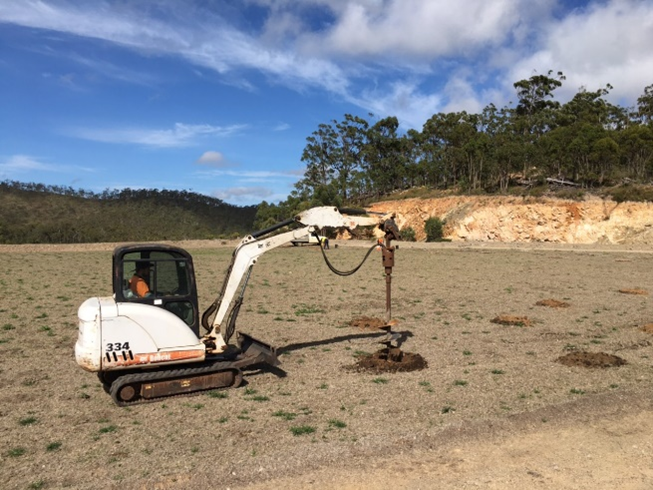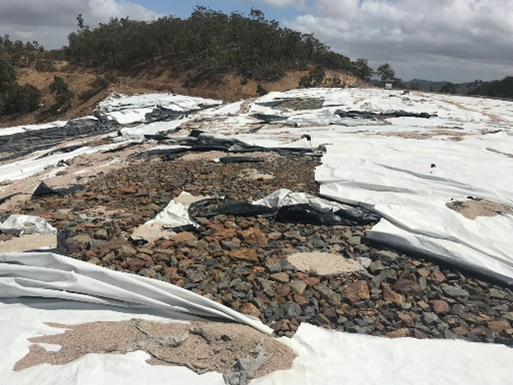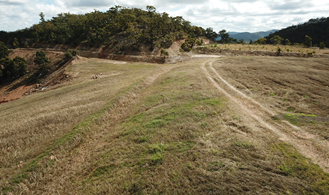Baal Gammon remediation project
Baal Gammon is a historical underground copper mine. Mining continued there for more than 100 years, with open-cut operations at the site occurring between 2011 and 2016.
- View a glossary of mining terms used on this page.
The site consists of a large open-cut pit, a waste dump, a mine water storage dam, hardstand laydown areas and other general mine infrastructure.
Past releases of untreated mine-affected water have contributed to contamination in the adjacent Jamie Creek. Water quality testing in 2013 resulted in Queensland Health advising that the water in Jamie Creek was not suitable for drinking, domestic or recreational purposes. The Queensland Health advice remains current.
Baal Gammon became an abandoned mine in May 2019, following cancellation of the mine operator’s mining lease for compliance issues.
We are consulting with the native title body corporate representing the Bar-Barrum People, the Mbabaram Aboriginal Corporation, about management activities on site.
Project snapshot
Region: North Queensland
Location: 20km west of Herberton on the Atherton Tablelands, Latitude -17.382700, Longitude 145.328500
Commodity: Copper
Mining type: Open cut
Date of abandonment: May 2019
Status: Remediation ongoing with development of long-term management options
Native title interest: Bar-Barrum people represented by the Mbabaram Aboriginal Corporation
Public land registers: Listed on the Environmental Management Register
Photo gallery
Key risks
Health and safety risks associated with:
- potential failure of the earth wall surrounding the mine pit should an overflow occur, with potential downstream impacts related to flash flooding
- onsite injuries related to fall risks around the pit high-wall or historic shaft/mine entrances
- onsite injuries related to water management infrastructure and general mine hazards.
Environmental risks associated with:
- large volumes of acid-forming waste rock, which can oxidise and contaminate water (such as rainfall) that contacts it
- potential overflow and release of contaminated water from onsite storage voids due to overfilling (either through an extreme rainfall event or gradual accumulation of water over time) with impacts in the adjacent Jamie Creek, and potentially Walsh River
- offsite surface or groundwater impacts from seepage from onsite water storages.
Completed works
- Installation of reliable pumping systems and water treatment infrastructure
- Installation of enhanced evaporation equipment (including industrial evaporators and smaller-scale irrigation systems)
- Daily operation of water management infrastructure and site monitoring
- Removal of waste material from site
- Testing and characterisation of waste rock across site
- Consolidation of acid-forming material in the pit cutback area, followed by capping
- Capping of the main waste rock dump (consisting wholly of acid-forming material)
- Start of revegetation activities across all areas of site
- Installation of lime rock offsite to mitigate against residual acidity
Planned works
- Ongoing daily site management tasks, including site monitoring, security, sampling and operation of site infrastructure such as the seepage pump-back system
- Maintaining readiness of pumping systems and other site infrastructure
- Water treatment and release, where appropriate
- Ongoing stakeholder engagement
- Maintenance and performance monitoring of capped and revegetated areas



